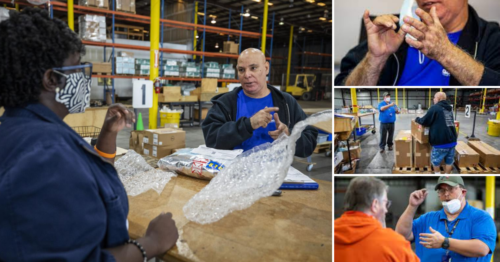
Why Goodwill Is More Relevant Than Ever
March 27, 2019Forbes.com recently published a piece from Lilach Bullock, who blogs on entrepreneurial issues, about the gathering momentum of social enterprises. The author defines a “social enterprise” as a for-profit company that makes money by solving social problems. It’s a means for making lasting change, and as the author suggests, Ebenezer Scrooge could have had a much more enduring impact following his Christmas Eve epiphany had he directed his energies (and money) toward starting an enterprise that helped the working poor or children with disabilities as opposed to directing his philanthropy strictly at the Cratchits. In other words, social enterprise requires a certain mindset, one that may not be instinctive.
Companies like Grameen Bank (“the bank for the poor”), which started the microcredit revolution more than 40 years ago, or Babban Gona, which teaches young Nigerian farmers how to make money from their crops, are working around the world to direct their profits into transforming peoples’ lives. It’s part and parcel of who they are.
Ms. Bullock cites Goodwill as an example of social enterprise, too except that the 161 North American Goodwill organizations operate autonomously as nonprofits. In fact, when Rev. Edgar Helms founded Goodwill in 1902, it was one of the first forms of social enterprises in America. As the author notes, “charity” and “profits” are not mutually exclusive terms.
Goodwill® differed from many charities of the day, emphasizing that donated goods could be sold for profit and that proceeds would be used to pay workers who helped refurbish those goods. Helms hired people in need — many who were considered unemployable — to do this repair work. Employees were paid $4 a day. The model centered around reselling donated goods and provide workforce opportunities lives on today as central tenants of Goodwill’s mission.
In the 21st century, however, we are focused on so much more. Our Goodwill prepares people with disabilities or disadvantages to participate in the workforce, giving them the skills and supports needed to become employable and gain upward mobility in a variety of industries throughout the community.
Our social enterprises fund the vast majority of workforce development services that Goodwill provides. They encompass retail thrift stores (34 stores, 2 outlets and 2 electronics stores); industrial services for janitorial, warehousing and logistics contracts; post-retail operations to resell or recycle donated goods that are not sold in retail stores; fees for services for programs in vocational services, transitioning from public assistance to independence, and youth career readiness and re-entry programs; and we derive revenue from philanthropic support.
These revenues support our Community Workforce programs and services delivered at Goodwill’s five Community Employment Centers at partners’ site. We employ nearly 100 people in professional roles such as career advisors, skills trainers, success coaches and program managers, and they provided workforce development assistance to 8,500 people last year. We also partner with community colleges, government agencies, schools and other non-profit organizations to ensure that job seekers have the supports and opportunities needed to get on and up the career ladder.
Last year we received nearly 50,000,000 pounds of donated goods and worked to make them available to consumers at bargain prices. It’s amazing to think that Goodwill’s social enterprise literally turns jeans into jobs while keeping more than 40,000,000 pounds of goods out of landfills.
In a world where consumers want their dollars to go farther and, as a bonus, do good for others, Goodwill’s social enterprise is just as relevant if not moreso today than it was more than a century ago.










